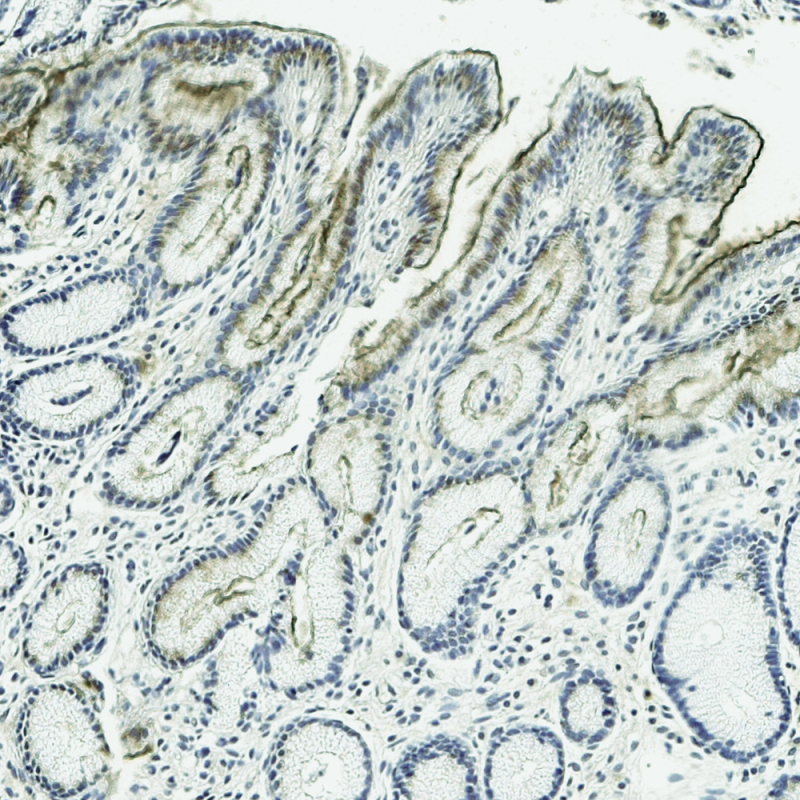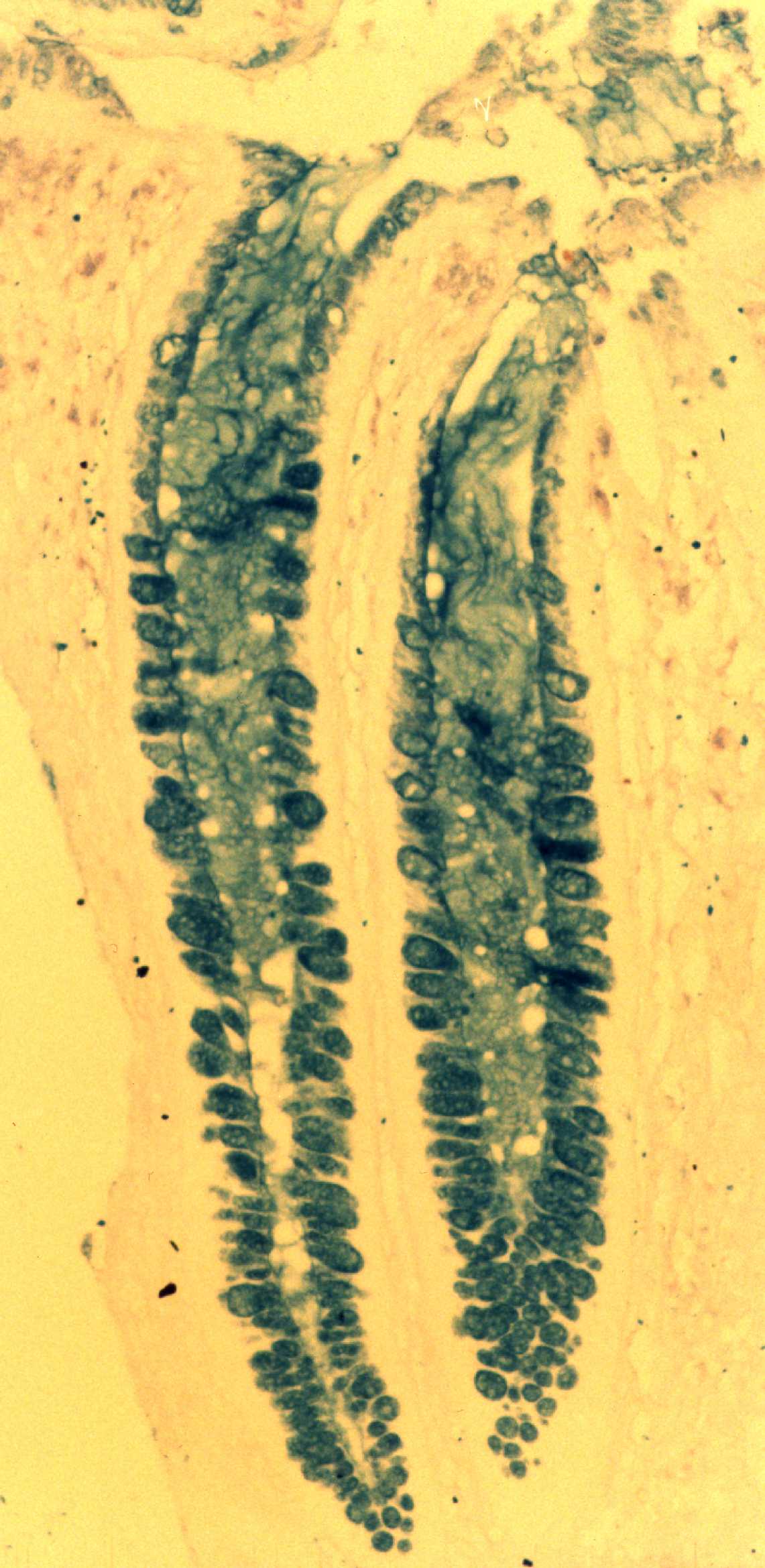
Mucins are high molecular weight glycosylated proteins that form a major part of a protective biofilm on the surface of epithelial cells, where they can provide a barrier to particulate matter and bind microorganisms. Membrane anchored mucins (eg MUC1) may have additional roles concerned with protein interactions at the cell surface. The genes encode mucin type proteins expressed in epithelial cells, of these a family of four related genes (MUC2, MUC5AC, MUC5B and MUC6) encode the major mucins secreted from specialized secretory cells (Rousseau et al., 2006).
A common feature of MUC genes is that they contain tandem repeats (TR) of DNA sequence which lead to tandem repetition of amino acid motifs. The repeated regions may comprise 50% of more of the polypeptide. Human mucin genes show a high level of polymorphism which is due to a variable number of tandem repeats (VNTR). This can lead to substantial differences in the length of the apomucin polypeptide in different alleles (Vinall et al., 1998). There is evidence that MUC allele distribution is different in different populations.
Mucins show change in pattern of expression in inflammatory disease and cancer (Matull et al., 2008; Rashid et al., 2013). We have also found suggestions of genetic associations with inflammatory disease. For example, atopic individuals who are free of asthma were shown to have longer MUC2 alleles than atopic asthmatics (Vinall et al., 2000) but this may reflect linkage disequilibrium in this gene complex (Rousseau et al., 2007) and MUC5AC is more likely implicated is susceptibility to chest disease (Guo et al., 2012; Johnson et al., 2013).
With EU-funding we prepared monoclonal antibodies to apomucins, some of which can now be obtained from Cancer Research Technology.

